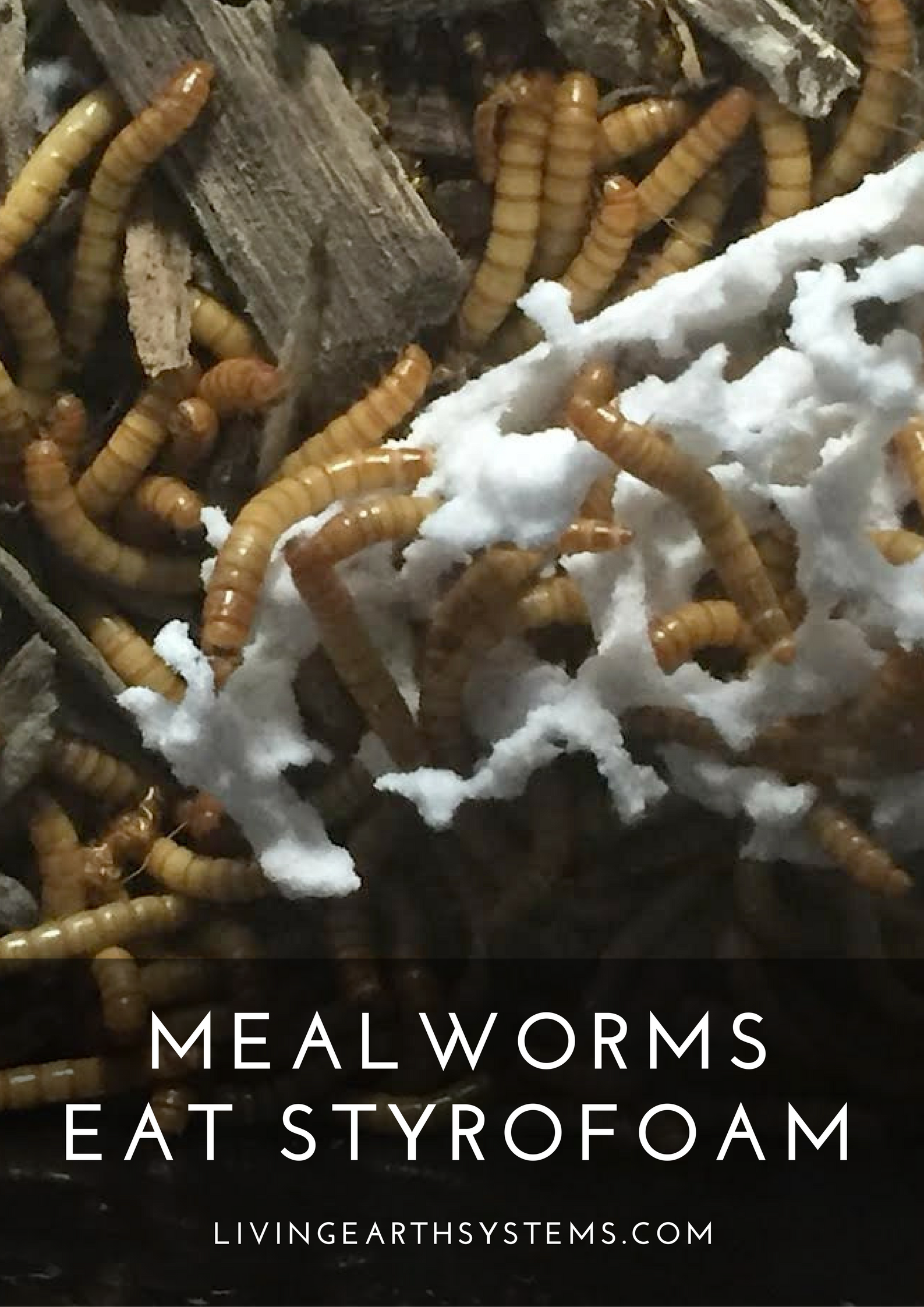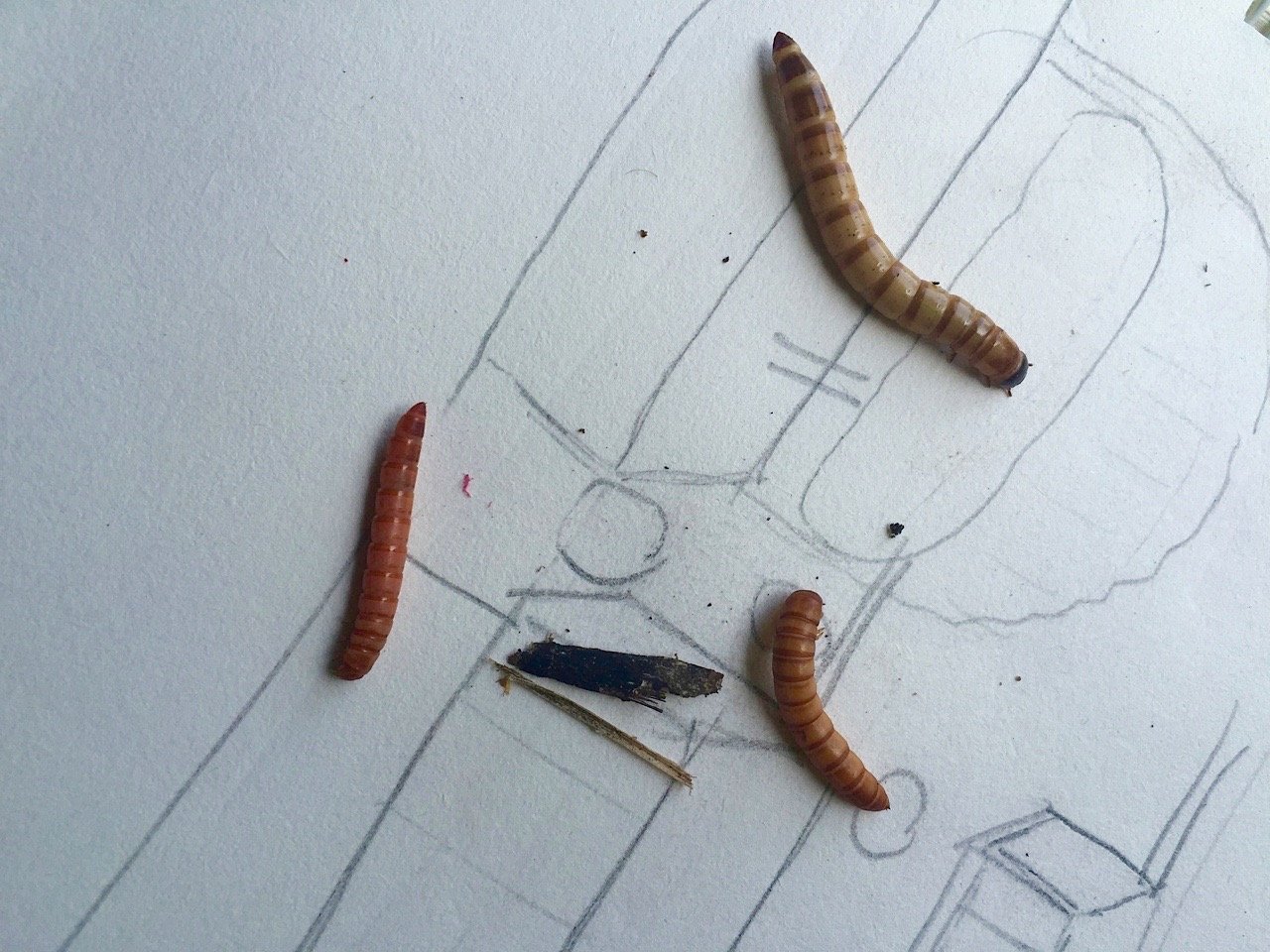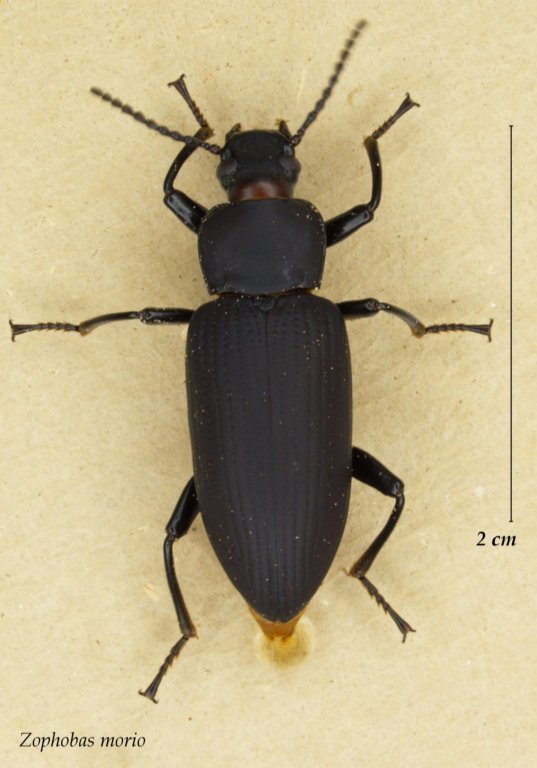Think you can’t compost styrofoam?Mealworms are the answer!
Within our living systems, we have been raising several types of mealworms in order to compost polystyrene (styrofoam). We recently came across the study by 2015 Standard University that confirms our suspicions that they are indeed turning styrofoam into usable organic matter!
Their notes are not much different than ours, except their equipment (gel permeation chromatography, solid-state 13C cross-polarization/magic angle spinning nuclear magnetic resonance spectroscopy, and thermogravimetric Fourier transform infrared spectroscopy) was a little better than ours. I mean, we do have a microscope and a few 5-gallon buckets…
Here’s the Abstract from the 2015 Stanford study:
Polystyrene (PS) is generally considered to be durable and resistant to biodegradation. Mealworms (the larvae of Tenebrio molitor Linnaeus) from different sources chew and eat Styrofoam, a common PS product. The Styrofoam was efficiently degraded in the larval gut within a retention time of less than 24 h. Fed with Styrofoam as the sole diet, the larvae lived as well as those fed with a normal diet (bran) over a period of 1 month… Within a 16 day test period, 47.7% of the ingested Styrofoam carbon was converted into CO2 and the residue was egested as fecula with a limited fraction incorporated into biomass. Tests confirmed that the polystyrene was mineralized to CO2 and incorporated into lipids.
The mealworms are able to do this due to their gut bacteria (Exiguobacterium sp. strain YT2) that actually breaks down the polystyrene. The Stanford study uses a common mealworm (the larvae of Tenebrio molitor Linnaeus) – we are using this same mealworm, but in addition to that we are also using what’s known as a “superworm” (the larvae of Zophobas morio), a type of darkling beetle, that has a lifespan of 3 to 15 years.
The superworm seems to be more aggressive, larger, more sturdy, and eats a lot more material. It also has the ability to live for up to a year in the larval stage just by keeping them all in constant contact of each other’s bodies. The other mealworm has a very short cycle.
A superworm is the larvae of the beetle, Zophobas morio
A superworm emerging from the whole he ate out of a block of styrofoam, and above him is the beetle the worm becomes.
A tank of mealworms eating styrofoam.
Superworms, the larvae of Zophobas morio
Superworms, the larvae of Zophobas morio
These mealworms will remain in their larval stage for up to a year, if kept in constant contact with each other.
They will only pupate once they’re separated from each other. The average time is 7-10 days of separation to initiate the metamorphosis, 10-14 days pupae, and they will then emerge as the darkling beetle. This is their natural cycle in nature – a year in the larval stage, then they pupate to become the beetle which lives for 3 to 15 years.
The pupa stage lasts 10-14 days before the superworm emerges as the beetle to the right.
Mealworm’s gut bacteria break down the styrofoam into usable organic matter! Click to Tweet
According to the Stanford study, a single meal worm can eat 46.36 mg of polystyrene waste a year.* So the small container of mealworms from the pet shop with 100 count is capable of eating 4636 mg of Styrofoam a year.
*100 worms can eat 380mg in 30 days (12.7mg/day). That means each worm can eat 0.127mg per day – 46.36mg per year!
We are in the process of measuring the amount of styrofoam that the superworms eat on a daily and yearly basis. So far, the numbers seem significantly higher than the numbers that the Stanford researchers found for the mealworms that they used.
We also have found that the plants we grow with the mealworms manure show no significant differences from those grown in other compost. This is an ongoing experiment. We are looking to have the plants tested, that are grown with the mealworm manure and try and see if there any detrimental effects.
There was also some information that was mentioned in the Stanford study indicating that the Indian meal moth is able to digest polyethylene plastic! This is very interesting as well…
Are mealworm droppings actually becoming usable organic material?
The 2015 Stanford tests indicate that the mealworm droppings actually become usable organic material through the fact that they’re calling the process “mineralization.”
Mineralization is the process of nutrients becoming available to plants. If you think about the carbon to nitrogen ratio – when it’s up 30:1 the bacteria need to the use the nitrogen to process the carbon. You often hear the term that the nitrogen is “unavailable,” “locked up,” or “bound.”
When the ratio drops to 25:1 the nitrogen becomes available for the plants.
The fact that these worms are converting about half of the styrofoam they eat into carbon dioxide and the rest into mineralized organic material suggest that it has come full circle.
We don’t know that we would grow all of our carrots and food that we eat in this stuff, but it definitely is food for thought.
We need to start thinking about how we’re going to leave a healthy planet for the generations beyond ourselves, and using mealworms to compost styrofoam is definitely thinking out of the box.
Enjoy this post?
Join our email list and get tons of free education on composting, off-grid solar, regenerative agriculture, homesteading…










